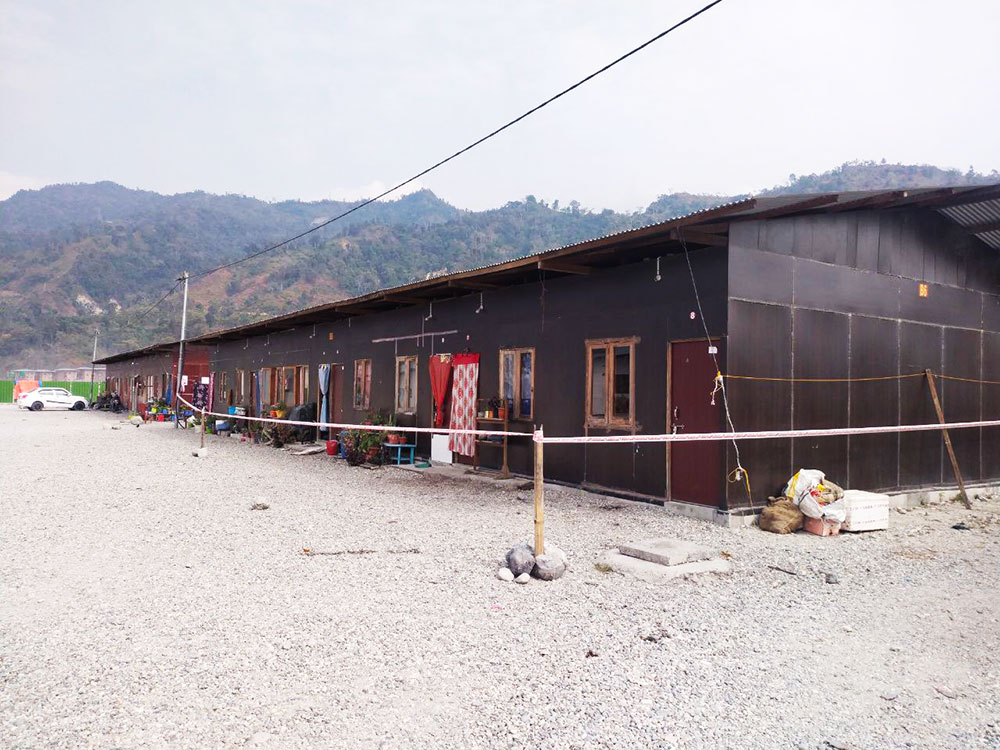Rajesh Rai | Phuentsholing
The Amochhu temporary settlement in Phuentsholing has recorded 180 positive cases between January 17 and yesterday.
There are 121 units in this temporary settlement and 58 percent of them, or 70 units, have been infected so far. Yesterday, residents from six units tested positive.
Close to 1,000 families live in this temporary settlement.
Residents share concerns about the way the outbreak in the settlement has been handled.
A resident, Sonam Tshering, said primary contacts are not tested.
“Usually, a unit is declared as a ‘red zone’ and demarcated with tape for 10 days,” he said. “But in these 10 days, they don’t test those left behind in that unit. The demarcation tapes are removed and movement is allowed after 10 days.”
Sonam Tshering said if a person under the same roof tests positive, only he or she is taken to isolation or quarantine facilities.
“Others remain in the house and this may be a reason why the virus is spreading,” he said.
Residents said that positive cases are kept together in the isolation ward for 10 days.
“After 10 days, what if one tested negative but a new case comes tomorrow and infects me? This must be looked into,” a resident said.
If a person who has recovered returns to a place where primary contacts are not tested, then there could be still risks of repeat infection, the resident said.
Another resident said that vegetable distribution in Toorsa temporary settlement could be distributed in combo packs. Vegetables are delivered to a shop inside the temporary colony and sold to the residents.
“This shop’s occupants were primary contacts, recently. After 10 days, they were allowed to sell again, but they were never tested.”
A woman, who is in isolation with her child, said even the toilets were not in good condition to use.
“We’re all in the same hall-like rooms. There are many children,” she said. “The medicines are also left by the door. Some don’t know which one to take.”
The woman said: “I am worried about my house rent. The house owner has started to call.”
Meanwhile, temporary shelter units are colour-coded with green, yellow, and red dots. Red dots are the newest ones detected.
Units declared green dots are those detected 10 days ago. If they were infected, it is expected they could have recovered. However, the tests are not done. Yellow dots are those detected within 10 days.
A Southern Covid-19 Task Force (SC-19TF) member said they lifted people from the temporary shelter and put them in quarantine facilities until the last week of January.
“Lately, we ran short of facility quarantine sites due to too many primary contacts and index cases,” he said.
“When too many primary contacts are put in hotel quarantine, rendering services in facility quarantine becomes very challenging and poses more risk of transmission due to crowding and protocol breaches,” he said.
In fact, it is more comfortable for people to stay home as they are free to do anything at home, whereas they have to follow strict quarantine protocols at the facility quarantine, he explained.
Further, due to shortage of facilities, he said all other dzongkhags have started to practice the same as recommended by the National Technical Advisory Group.
“Lately, it has been recommended by NC-19TF too. I strongly feel it is more convenient being home quarantined because they comply with the home quarantine protocols.”
Meanwhile, with just two days left for the 10-day complete lockdown to end, it is uncertain what is in store for Phuentsholing, as Covid-19 cases continue to emerge.
Yesterday, the town saw a total of 102 positive cases, out of which 45 were from the community. This was found from a total of 484 samples taken on February 12.
Phuentsholing went under lockdown from January 15, with partial movements allowed within zones. Considering the increasing number of positive cases, the SC-19TF declared a complete 10-day lockdown from February 6.


